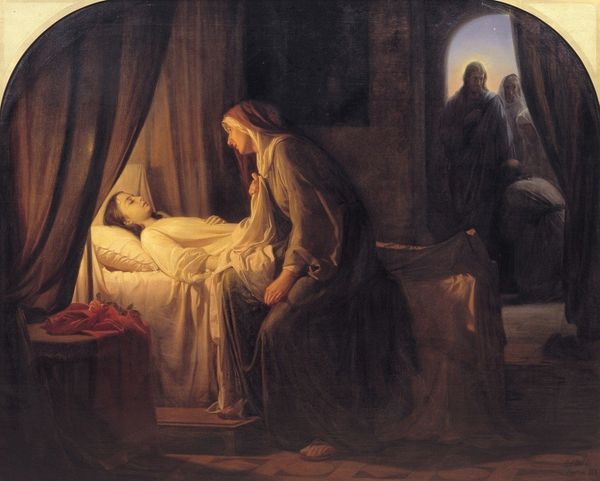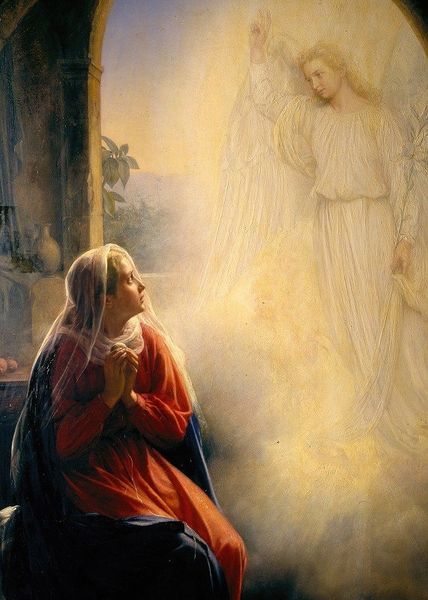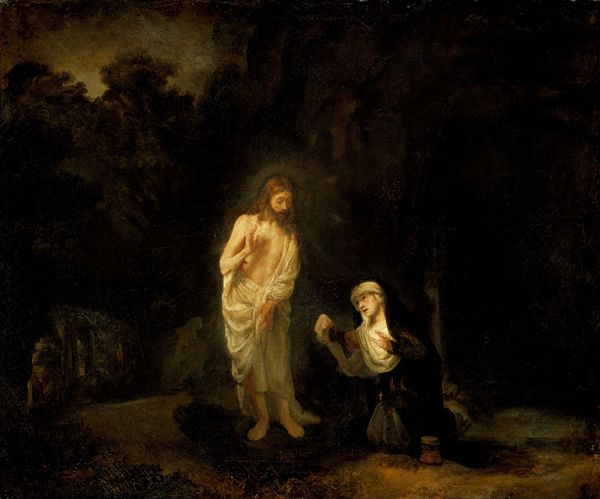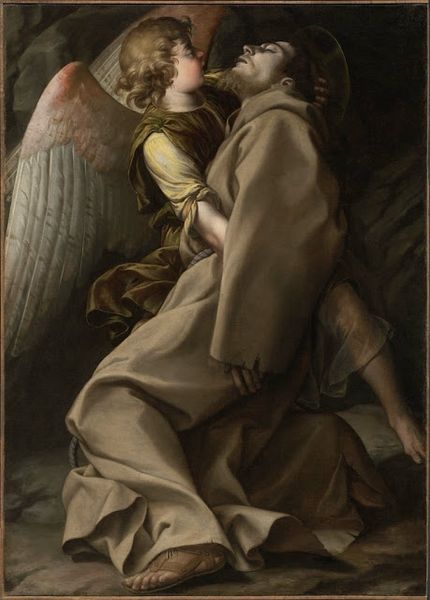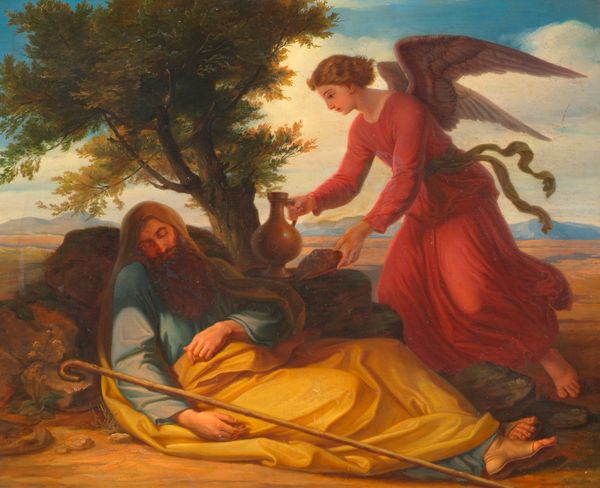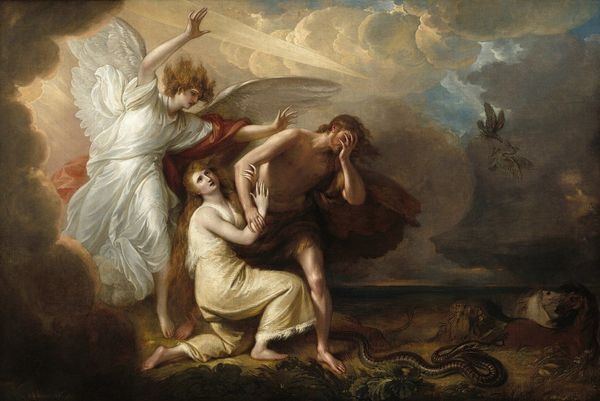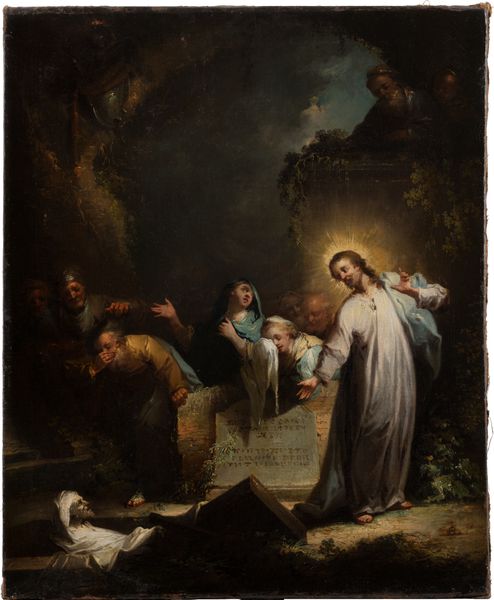
Copyright: Public Domain: Artvee
Carl Bloch’s Christ at Gethsemane was made with oil paint, a medium that has a rich history within Western art. It’s worth considering how Bloch used this traditional material to represent a powerful moment in Christian theology. Notice the dramatic use of light and shadow. Bloch carefully layered the paint to create a sense of depth and realism. Oil paint allows for smooth gradations and the blending of colors, which you can see in the soft glow around the angel and the subtle highlights on Christ’s face. The texture of the paint itself adds to the emotional impact of the scene, creating a sense of reverence and solemnity. But oil painting also has a significant economic history. From the grinding of pigments to the skilled application of layers, the creation of an oil painting involves labor. Reflecting on this material aspect reminds us that even spiritual subjects are brought into being through human effort. It underscores the value of considering materials, processes, and social context when trying to understand the full meaning of an artwork.
Comments
No comments
Be the first to comment and join the conversation on the ultimate creative platform.
